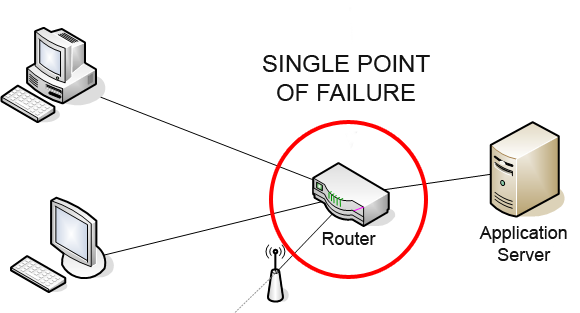As you may know, a single point of failure (SPOF) is any part in the system that if it breaks or malfunctions will stop the entire thing from working. In IT this can be anything from a faulty switch to an internet service provider outage and when these happen they are often disastrous for businesses as well.
One way to combat SPOFs then would be redundancy; having duplicated all critical components so that there is no possibility of downtime due because one component has failed or malfunctioned
Sometimes your internet service provider can be a single point of failure if you don’t have redundancies built in to account for failures on their end. If this happens, it’s not only the other countries that are affected by this outage but also businesses within those nations will experience downtime and potential lost revenue when they rely heavily upon having a constant connection with these providers. Tech Engine Australia strongly advises companies who need access to the internet to function properly invest in backup ISP just in case something goes wrong during peak hours or outages lasting longer than 24-hours straight!
A single point of failure audit is an easy way to find any potential issues that could leave your business vulnerable. You can create a network diagram and identify the points in your system where redundancy isn’t present, then come up with plans for each issue you’ve found.
When you have a single switch as the main way of delivering power to all your servers, if that one piece fails then everything connected will go offline. Having multiple switches means there are more routes for electricity and data to make it through in case something happens with the first; this is called redundancy. This can give any managers an easy second option when their original plan goes amiss or breaks down completely because they’re protected by redundancies built into their networks.
There’s never a need to overcomplicate the process of dealing with single points of failure. The key is identifying risk and then building a plan for eliminating it. If your single point of failure is machinery, you can take some steps to ensure that machine will always be running smoothly by either keeping spare parts on hand or buying back up pieces if needed in case something goes wrong so there’s no downtime. You can also establish 24-hour replacement services as an insurance policy against any emergencies should anything critical go down while you’re asleep at night.
Assessing your single points of failure is one critical task that no company can afford to ignore. It’s not enough for a business owner or manager to just hope their IT guy will keep them up and running, it takes planning ahead by recognizing potential issues within your system-of which there are many. From firewalls being down due to power outages or insufficient systems capacity, following the guidelines below in order from most likely point of failure (highest risk) on through least should help you identify areas where SPOFs could jeopardize operations. For an advice on a SPOF audit, contact us today.




